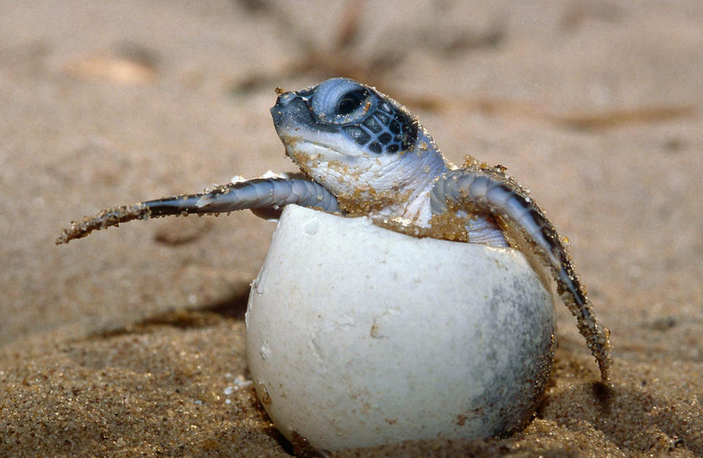Since the beginning of hawksbill sea turtles’ egg-laying season (late February), 90 turtles have arrived on the coasts of Shib Deraz Village on Qeshm Island, 64 of which have managed to lay more than 5,000 eggs. The number shows a moderate increase compared to the previous year when only 51 turtles could lay eggs in the area.
“Each female turtle lays an average of 70 eggs, but some have been observed to lay 98 eggs,” said Muhammad Ghavasi, the marine environment expert at Qeshm Free Zone Organization, IRNA reported.
Pointing to the change in the turtles’ reproduction season, Ghavasi said, “This year they began laying eggs earlier and the first case was registered on February 26.”
He referred to climate change and the warming of the planet and seas as the likely reasons for these reptiles’ early oviposition (egg laying).
An area of 30 square meters was previously defined where the laid eggs were unearthed and transferred to a protected zone. However, this year the area has been doubled to 60 square meters due to the rise in the number of eggs.
The project of protecting turtle eggs was launched in Iran in 2002 in cooperation with JEF/SGP (Global Environment Facility Small Grant Program) as a result of which today between 70% and 80% of the hawksbill turtle eggs hatch.
The Persian Gulf islands of Shidvar, Nakhiloo, Kish and Qeshm are four conservation sites for hawksbill sea turtles in Iran.
The hawksbill sea turtle (Eretmochelys imbricata) is a marine reptile which enters the Persian Gulf waters each year from the Indian Ocean between February and June to lay eggs in Shib Deraz, which hatch in early May.
This rare animal is easily distinguished from other sea turtles by its beak-like mouth (from which its common name is derived) which helps pull sea sponges, its principal food, out of the curves of corals.
The International Union for Conservation of Nature classifies the hawksbill as critically endangered. It has also been listed on Appendix I of the Convention on International Trade in Endangered Species which outlaws the capture and trade of hawksbill sea turtles and products derived from them as well as Appendices I and II of The Convention on the Conservation of Migratory Species of Wild Animals.


